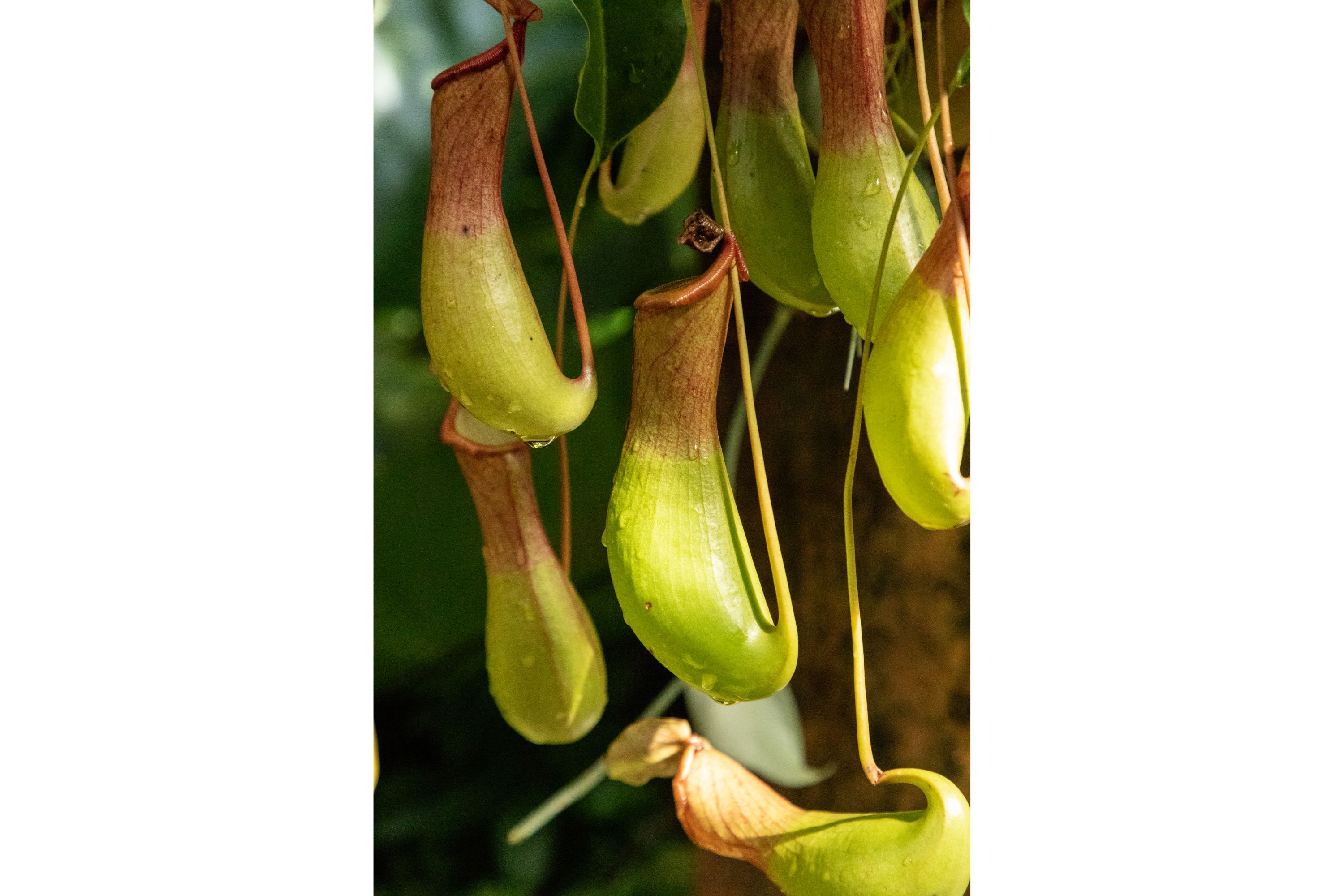Tropical pitcher plant
(Nepenthes ventricosa)

Description
Nepenthes ventricosa is a tropical pitcher plant endemic to the Philippines, where it is a highland species, growing at an elevation of 1,000–2,000 metres (3,300–6,600 ft) above sea level. It has been recorded from the islands of Luzon, Panay, and Sibuyan. The pitchers are numerous, growing up to 20 centimetres (8 in) tall and ranging in colour from ivory white to red. Nepenthes ventricosa is very closely related to both N. burkei and N. sibuyanensis, but can be distinguished by a more waisted middle to the pitchers, a smaller mouth, and, generally, a thinner peristome. Nepenthes ventricosa f. luteoviridis Hort. ex Y.Fukatsu (1999) nom.nud. Nepenthes is a genus of carnivorous plants, also known as tropical pitcher plants, or monkey cups, in the monotypic family Nepenthaceae. The genus comprises about 170 species, and numerous natural and many cultivated hybrids. They are mostly liana-forming plants of the Old World tropics, ranging from South China, Indonesia, Malaysia, and the Philippines; westward to Madagascar (two species) and the Seychelles (one); southward to Australia (four) and New Caledonia (one); and northward to India (one) and Sri Lanka (one). The greatest diversity occurs on Borneo, Sumatra, and the Philippines, with many endemic species. Many are plants of hot, humid, lowland areas, but the majority are tropical montane plants, receiving warm days but cool to cold, humid nights year round. Nepenthes species usually consist of a shallow root system and a prostrate or climbing stem, often several metres long and up to 15 m (49 ft) or more, and usually 1 cm (0.4 in) or less in diameter, although this may be thicker in a few species (e.g. N. bicalcarata). From the stems arise alternate, sword-shaped leaves with entire leaf margins. An extension of the midrib (the tendril), which in some species aids in climbing, protrudes from the tip of the leaf; at the end of the tendril the pitcher forms. The pitcher starts as a small bud and gradually expands to form a globe- or tube-shaped trap. The shapes can evoke a champagne flute or a condom. The trap contains a fluid of the plant's own production, which may be watery or more viscous, and is used to drown the prey. This fluid contains viscoelastic biopolymers that may be crucial to the retention of insects within the traps of many species. The viscoelastic fluid in pitchers is especially effective in the retention of winged insects.
Taxonomic tree:







